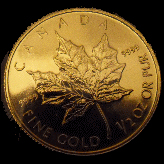What is Fineness?
by Jerry WhiteThe jargon of the precious metals markets can be confusing to new investors. For example, what exactly is fineness of gold or silver? Who determines it, and can it be trusted?
Simply, fineness is a measure of the quality of a sample of a precious metal. It represents the purity of the precious metal in an alloy, as determined by assaying the bar, expressed in parts per thousand. Each precious metal has a minimum standard of purity set by the market. London good delivery gold bars (weighing approximately 400 ounces each) must assay at least 99.5% pure gold; that is, 995 parts of gold per thousand parts of metal, or “995 fine“. Some gold coins and small gold ingots are made from gold that was refined up to 99.99% pure gold; that is, 999.9 parts per thousand, generally stated as .9999, or four nines.
While investors often prefer .9999 gold for psychological reasons and may be willing to pay a premium for it, it was not created for their benefit. Four nines gold and even higher-purity six nines gold (99.9999%) are made for electronics uses by further refining of .995 gold. The purpose of the extra refining step is to eliminate impurities that impede electrical conductivity. The additional refining cost is part of the premium over the loco London price that an investor will pay for the higher quality gold.
Gold is sold by its fine weight, so a customer who buys a 400 ounce .995 bar that weighs exactly 400.000 troy ounces will pay for only the fine gold content (the fineness times the gross weight of the bar): 400.000 x .995 = 398.000 troy ounces. Each good delivery bar will be stamped with the refiner’s mark, its year of manufacture, purity, gross and fine weignt, and a unique bar number. Sometimes weights of small bars will be rounded, so a kilobar, which weighs 32.1507 troy ounces, might be stamped either as 32.15 or 32.151 gross weight, but will be sold at its fine weight of gold contained.
It is unlikely that an internationally recognized gold refiner would scam the London bullion market by marking a bar with an inaccurate fineness. Some gold bars find their way into manufacturing processes, and the refiner of a fraudulent bar would be quickly outed, never to be allowed back to the market. Whenever a good delivery bar is removed from a London dealer’s vault by a customer and then later returned, it must be melted and reassayed. As a result of the assay expense, bars not intended for prompt industrial use remain in a dealer’s vaults.
Silver bars must be at least 999 fine and are sold by gross weight rather than fine weight. Platinum and palladium ingots and plate must be at least 999.5 fine and, like gold, are sold by fine weight.
Guide to buying gold and silver
Americans are learning about precious metals, and many are buying gold and silver for the first time. Some are concerned about the erosion of their purchasing power as the Treasury runs the dollar-printing presses and the Fed buys Treasury bonds. Some are concerned about a possible collapse of the US financial system in the face of sharply rising government debt. Get beyond the market jargon like troy ounces and fineness and learn about gold as an investment.

Precious Metals Investor’s Guide from TradersGame.com
To learn to invest in gold and silver, avoid pitfalls and save money by buying the form that is appropriate rather than one a salesman wants to sell you, read our precious metals investor’s guide, How to Buy Gold and Silver Today. Read it tonight and start protecting your purchasing power tomorrow.
Articles
Who Sets the Prices of Precious Metals?
Why a Rising Gold Price is Bad News
Hyperflation and Gold: Losing Faith in the Dollar
Invest in Gold to Preserve Your Purchasing Power
Buying Gold to Meet your Investment Goals
Pitfalls to Avoid When Investing in Gold
Making your First Silver Trade
Investing in Platinum-Group Metals
Will the US Government Confiscate Your Gold?

